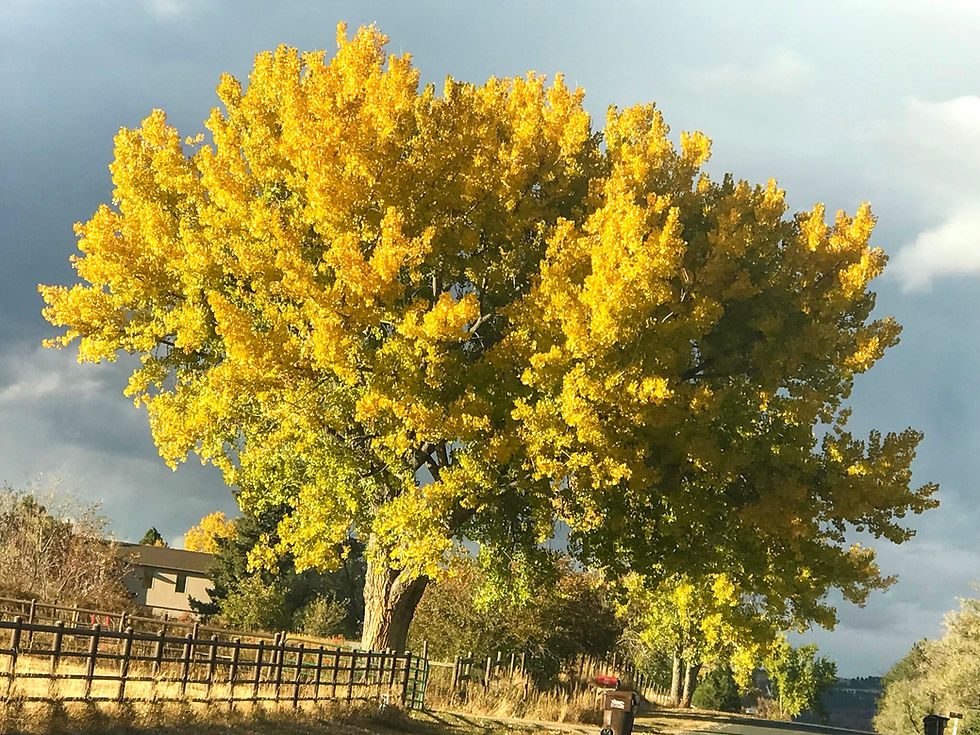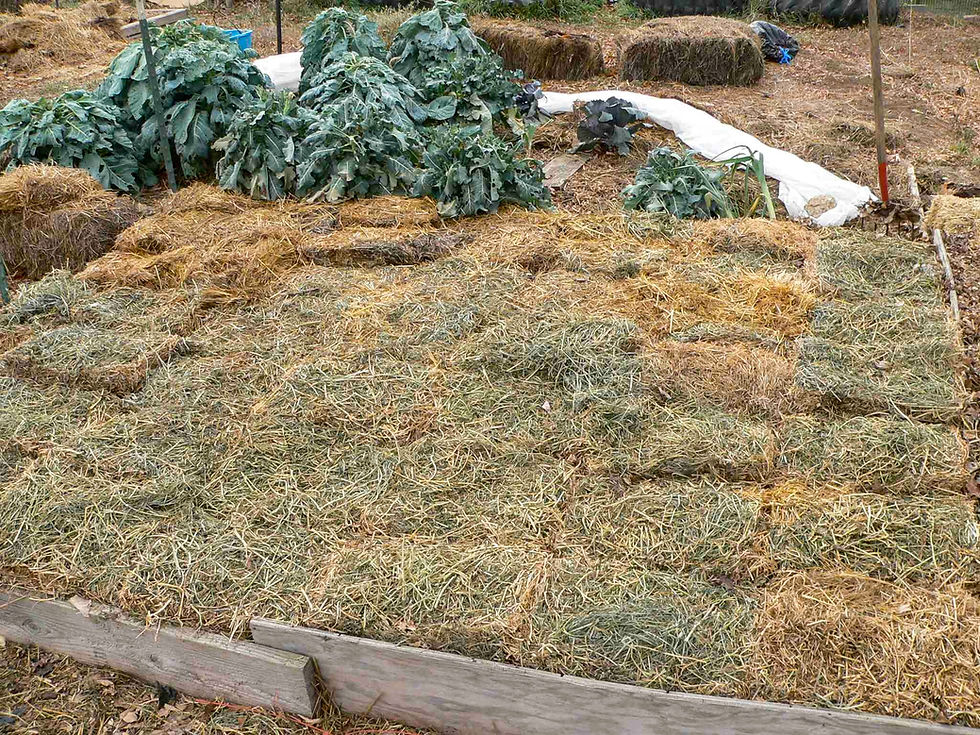October 2021 Newsletter
- Jane Shellenberger
- Oct 26, 2021
- 4 min read
Updated: Nov 12, 2021
By Jane Shellenberger

Email Newsletter • October 26, 2021

The cold weather usually rolls in at or around Halloween but it’s been a stunning fall. The plains cottonwoods are incredibly beautiful right now. This one is across the street from me.

Preparing the Veggie Garden for Spring As soon as the leaves fall is great time to prepare the vegetable garden for winter and next spring. Any time and effort you put in now will go a long way toward creating healthy living soil that gets better every year. Planting in the rich crumbly soil you start creating now will be much easier and more rewarding come spring. Leaves are a great free source of organic soil building material and mulch. I like to collect them from my own and friends’ trees but I’ve often picked up bags left out on curbs for pick-up too. I shred them using the vacuum setting on my leaf blower (not all have this reverse vacuum/shred setting so if you buy one make sure to check), spread them onto veggie beds, and fork them in. You don’t even have to work them in but if you’re not covering them with mulch they will more easily blow away if you don’t. The worms will come up and drag the leaf pieces down but forking them in makes that easier. I usually add some composted manure too. Next I wet down this leafy layer and cover it with flakes of hay.

2nd cutting hay has no seeds but I’ve more often used first cutting with no problem. As long as you leave the flakes thick and intact very few seeds will sprout. Lots of gardeners like to use straw but it’s become very expensive and herbicide contamination is an ever increasing problem. If you don’t have access to hay for mulch (the funkier the better – and this “cow hay’ is cheaper too), you can just use leaves but be sure to shred if you can and wet them down well so they won’t blow away. You might think that covering the bed in this way will block moisture from winter snow, but it will make its way down around the edges of the hay flakes. After wetting it down initially, covering the soil is key to keeping moisture in since we have more dry days in winter than wet ones in our climate. (I have a detailed explanation of all this in my book, Organic Gardeners Companion, Growing Vegetables in the West, which is now out of print but used copies are often available online and at libraries.)
Wood chips make great mulch for paths, for trees and garden plants that like organic mulch – roses, peonies, etc. Some xeric and dryland plants - hardy ice plants and those with deep taproots for example - don’t like organic mulches, especially during the winter, and may rot due to retained moisture. Gravel mulches are better for these. Wood chips take a long time to break down, especially in drier climates like ours, and they use up soil nitrogen in the process so they aren't recommended as mulch for veggie gardens. But I have been surprised to see a few vegetable gardens with very healthy broccoli, kale & other plants mulched with wood chips on top of compost. Tree companies will usually dump a load for free so if you have enough room they are very useful. Wet them down occasionally to speed up the breakdown process. Mulching around trees – but not right up against the trunk where decay can set in! – makes a huge difference. There is a nice article by Kenton Seth that you might want to check out in our Harvest 2021 Issue on mulches for different types of plants/gardens.

Summerhome Garden
Those of you who live in Denver might want to visit a beautiful new pocket park/garden at 643 S. Vine. Summerhome is open to the public. I went about a month ago late in the day when the afternoon light illuminated all the ornamental grasses and agastaches. When the house on that lot came up for sale, the owner of the older bungalow next door, alarmed by all the teardowns and very tall modern houses going up, bought it, tore down the old house, and with the help of a Denver Botanic Gardens staff person, put in this beautiful western garden.

Many Fewer Birds The lack of birds this year is troubling. I’ve seen many fewer and I’ve heard similar reports from many friends along the Front Range. There are usually lots more goldfinches on the sunflowers in the fall and I haven’t seen or heard any Western Meadowlarks since early March. This is completely unusual for Hygiene hay country which is prime habitat for this iconic, endangered species.

On that note, I’ve been very impressed during the past year by a new focus in the literature and leadership at many environmental organizations, including the Sierra Club - both national & in Colorado. If you’d given up on some of these due to general despair try revisiting & supporting their excellent work now. Also check the in-progress guide to buying bee safe plants on the Front Range on our website, added after the Harvest issue came out.
We are always interested in your ideas and suggestions for content so stay in touch!
Jane Shellenberger
Editor, Colorado Gardener





Comments